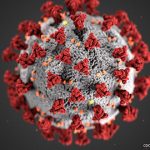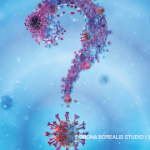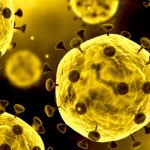Testing, Testing
Two days, minimum. That is how long it would take most of us, on average, to get a polymerase chain reaction (PCR) test for COVID-19, assuming you don’t have a contract with a professional sports franchise. One day to schedule the test, and one day for the test to be run. The PCR test, which generally uses a nasopharyngeal swab and detects SARS-CoV-2 RNA, is the gold standard test, with the highest sensitivity and specificity. It is also labor intensive, requiring trained personnel both to collect the sample and to run the test.
Steven Woolf, a professor of family medicine, epidemiology, and community health at Virginia Commonwealth University, Richmond, describes American medicine as “all breakthrough, no follow-through.”6 This is especially apparent with regard to the availability of PCR tests.
There are many large labs across the country that could be rejiggered to offer rapid turnaround of tests for SARS-CoV-2. Unfortunately, the need for these tests is scattered across the country, and there is no easy way to transport large volumes of biological samples from the Midwest to, say, Boston.7
National testing conglomerates, such as Quest and Labcorp, which already have the necessary networks in place for transporting samples to centralized labs, have limited financial interest in completely redesigning their facilities to meet a need that may not exist next year.
What we really need is a different sort of test, one that does not need to be processed by a lab and can give results in 20 minutes rather than two days. Point-of-care testing for COVID-19 largely falls into two categories:8
- Rapid molecular tests. These tests use reverse transcriptase polymerase chain reaction to detect SARS-CoV-2 RNA, and include ID NOW (Abbott), cobas (Roche), Cue COVID 19 Test (Cue Health), Xpert Xpress (Cepheid) and Accula (Mesa Biotech).
- Rapid antigen tests. These tests detect the proteins associated with SARS-CoV-2 infection, and include Sofia (Quidel), Veritor (BD), BinaxNow (Abbott) and LumiraDx.
Not everyone is convinced that point-of-care testing is such a good idea. The sensitivity of all tests for COVID-19 is lower among asymptomatic patients. This was demonstrated in spectacular fashion by the White House, which has used Abbott’s point-of-care test to screen all visitors, only to find itself at the center of many subsequent diagnoses of COVID-19.9 It is, of course, difficult not to breathe a sigh of relief when you learn that you tested negative. If you use that information as permission to engage in risky behavior, such as attending a large reception in the White House’s Rose Garden, the test may be doing more harm than good.
Point-of-care testing, however, may provide us with our best chance to return to some level of normalcy as the pandemic plays out. The main benefit of rapid, frequent testing lies in the ability to quickly identify those who are infected. Our current approach to COVID-19 is reactive: disease surges are met by panicked closings of schools, restaurants and other places of business. New York State uses a micro-cluster strategy, in which such closures are limited to a small geographic area, but even this technique affects many innocent bystanders. It also fails to acknowledge that people are highly mobile, and if the restaurants and bars are closed in my neighborhood, nothing prevents me from driving to another town to indulge. Frequent testing of asymptomatic patients may allow for a proactive strategy, in which infected individuals are pulled from circulation before they can transmit the disease to others.
Modeling by Daniel Larremore, an assistant professor of computer science at the University of Colorado, Boulder, demonstrates how this might work. In a hypothetical city of 8.4 million, widespread, twice-weekly testing with a lateral flow antigen test—a rapid antigen test that uses the same technology as home pregnancy tests—reduced the infectiousness (R0, or R-naught) of SARS-CoV-2 by 80%. That’s enough to reduce the R0 of SARS-CoV-2 from 2.5 to 0.5, below the level needed to perpetuate the pandemic.10
In other words, widespread testing combined with rapid isolation of patients, may be enough to halt the pandemic in its tracks.
In Larremore’s model, it is the speed of testing turnaround, rather than the sensitivity of the test, that matters most. Twice-weekly testing with a more sensitive polymerase chain reaction test, which takes up to 48 hours to process, reduced the infectiousness of SARS-CoV-2 by only 58%. In this case, the better test is not worth the wait.
Unfortunately, such rapid testing is not widely available, but this may change soon. On Dec. 15, 2020, the U.S. Food & Drug Administration (FDA) approved the Ellume COVID-19 Home Test, which provides results within 20 minutes.11 This is the first FDA-approved test for SARS-CoV-2 that can be taken at home, without a prescription and without additional processing by a laboratory. The White House just announced that it is purchasing 8.5 million of these tests, at a cost of $30 each. It is hoped that the $231.8 million contract will allow Ellume to increase production and decrease costs, so that the test will eventually be available to everyone.12 The Innova lateral flow COVID-19 test has already been approved in the United Kingdom, but has lower sensitivity for infections in asymptomatic patients (49% vs. 91%).13
Such rapid tests may also make it possible to better use the tools we already have. Antibody-based therapies for SARS-CoV-2—including monoclonal antibodies and convalescent serum—may prevent patients from developing severe forms of COVID-19. But there’s a catch: Patients have to be identified early. These interventions don’t seem to help patients who already have the most severe forms of the disease. Rapid testing may increase the number of patients who are eligible for these interventions, potentially keeping them out of hospital beds.14
Many of us have pinned our hopes on vaccination efforts that are taking place worldwide. Unfortunately, they aren’t taking place fast enough. Leana S. Wen, an emergency physician and visiting professor at George Washington University Milken Institute School of Public Health, estimates that at our current rate, it will take us 10 years to achieve herd immunity in the U.S. In order to vaccinate all Americans by the end of June, we would have to perform 3.5 million vaccinations every day.
Part of the problem is us. In some areas of the country, up to 50% of healthcare workers have refused to be vaccinated against COVID-19.14 Vaccine hesitancy among healthcare workers is yet another unanticipated hurdle that will need to be surmounted if we are to reach our goal.
Part of the problem is the virus is getting smarter. The B.1.1.7 variant of SARS-CoV-2, first identified in the United Kingdom, is believed to be 50% more transmissible than the strains commonly seen in the U.S. The South African variant may be even worse. The appearance of faster spreading variants heightens the need to think creatively and aggressively about how to use currently available interventions—including masking, social distancing, and testing—more effectively.
In the meanwhile, David M. Cutler, PhD, and Lawrence H. Summers, PhD, estimated that the total cost of the pandemic is $16 trillion, which is 90% of the annual gross domestic product of the U.S.15 That was in October 2020. The cost of widespread testing pales in comparison.
By next year, I hope the proliferation of vaccines will bring the pandemic to an end. This year, frequent testing with rapid turnaround, followed by equally rapid isolation of individual patients, provides us with our best chance at returning to reasonably normal lives.



